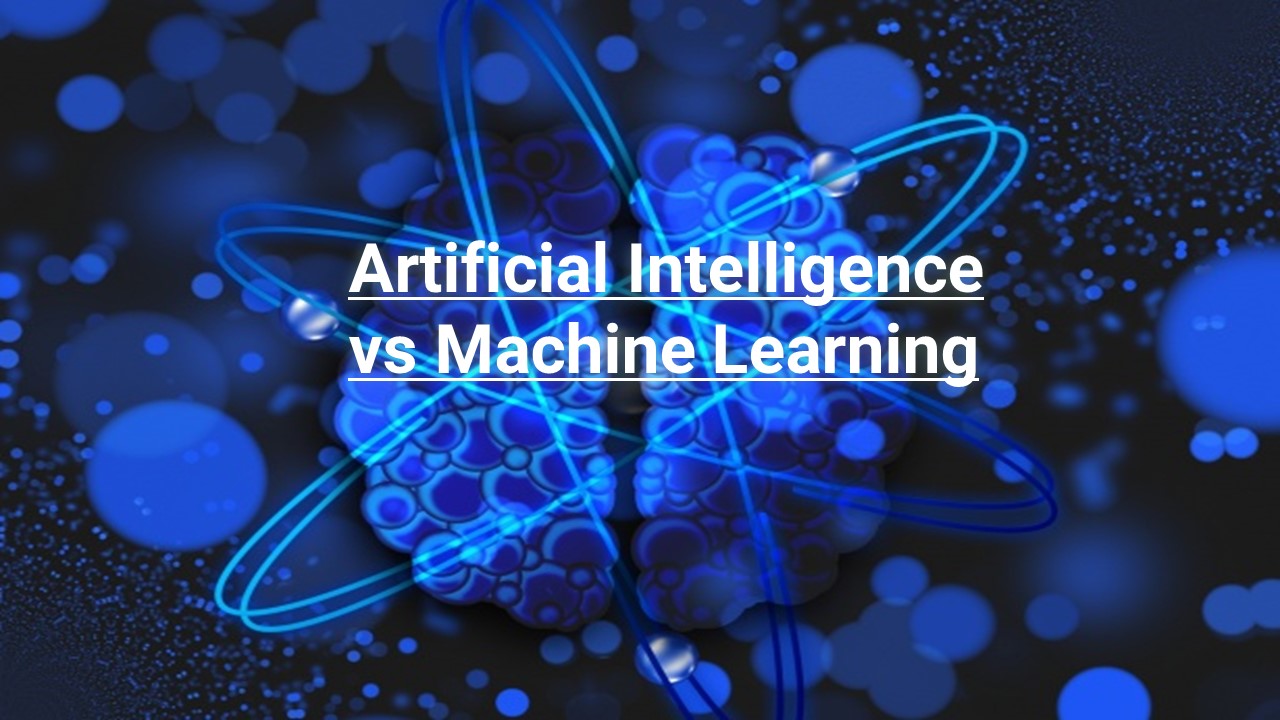Artificial Intelligence vs Machine Learning - PowerPoint PPT Presentation
Title:
Artificial Intelligence vs Machine Learning
Description:
Artificial Intelligence (AI) and Machine Learning (ML) are two terms that often come up when discussing the future of technology. Learning Artificial Intelligence can be highly beneficial because there is increasing demand for artificial intelligence professionals so taking an artificial intelligence course in Delhi will help you to gain a new skill. – PowerPoint PPT presentation
Number of Views:6
Title: Artificial Intelligence vs Machine Learning
1
Artificial Intelligence vs Machine Learning
2
Artificial Intelligence (AI) and Machine Learning
(ML) are two terms that often come up when
discussing the future of technology. Both AI and
ML have gained significant attention in recent
years, as they hold the potential to
revolutionize various industries and reshape our
everyday lives.
3
To understand the differences between AI and ML,
it's essential to understand artificial
intelligence and machine learning. Learning
Artificial Intelligence can be highly beneficial
because there is increasing demand for artificial
intelligence professionals so taking an
artificial intelligence course in Delhi will help
you to gain a new skill.
4
Understanding Artificial Intelligence
5
Artificial Intelligence (AI) refers to the
development of computer systems or machines that
can perform tasks that typically require human
intelligence.
AI aims to simulate human-like cognitive
abilities, including learning, problem-solving,
reasoning, and decision-making. It involves the
creation of intelligent machines that can
perceive their environment, understand and
interpret information, and take appropriate
actions to achieve specific goals.
6
Understanding Machine Learning
7
Machine Learning (ML) is a subset of Artificial
Intelligence that focuses on developing
algorithms and models that allow computers to
learn and make predictions or decisions based on
data without being explicitly programmed. It
enables machines to automatically learn and
improve from experience, without the need for
explicit instructions for each specific task.
8
Differences between AI and ML
9
- AI refers to the broader concept of creating
machines that can simulate human intelligence and
perform tasks that typically require human
intelligence, such as reasoning, problem-solving,
and decision-making. - ML, on the other hand, is a subset of AI that
focuses on the development of algorithms and
models that enable computers to learn from data
and improve their performance on specific tasks. - AI systems can operate with or without human
intervention. - ML algorithms require human intervention during
the training phase. - AI systems often aim to exhibit general
intelligence and have a wide range of
capabilities across different domains. - ML algorithms, on the other hand, are typically
designed to solve specific tasks or problems
based on the data they were trained on.
10
Advantages of AI
11
AI offers several advantages, including
automation and increased efficiency by
eliminating repetitive tasks. AI systems can
process vast amounts of data, leading to better
decision-making accuracy and speed. Additionally,
AI algorithms excel at problem-solving by
analyzing patterns and making predictions.
12
Disadvantages of AI
13
The development and maintenance of AI systems can
be costly due to specialized hardware and
expertise requirements. AI lacks human-like
creativity, intuition, and common sense
reasoning. Ethical concerns arise as AI systems
can perpetuate biases, invade privacy, and raise
questions regarding their decision-making
processes. Lastly, automation by AI can result in
job displacement, necessitating the acquisition
of new skills and the creation of new job roles.
14
Advantages of Machine Learning
15
ML, on the other hand, possesses advantages such
as adaptability and continuous improvement by
learning from new data. ML algorithms excel at
pattern recognition, making them highly effective
in identifying correlations and patterns in large
datasets. Furthermore, ML techniques are
versatile and can be applied across various
domains, offering flexibility in their
applications.
16
Disadvantages of Machine Learning
17
ML models heavily depend on quality and
representative data for training, making them
sensitive to biased or incomplete datasets. Some
ML models lack interpretability, making it
challenging to understand their decision-making
processes. Overfitting can occur, where models
perform poorly on new, unseen data due to
excessive adaptation to training data.
Additionally, training complex ML models often
requires significant computational resources in
terms of power and time.
18
Conclusion
19
Artificial intelligence (AI) and machine
learning (ML) are two closely related fields that
are revolutionizing industries and society.
These technologies have the potential to automate
processes, personalize experiences, advance
healthcare, and transform various sectors.
However, ethical considerations, job
transformations, and security concerns must be
addressed. Despite the challenges, the future of
AI and ML is promising, with potential for
scientific discoveries, economic growth, and
improved quality of life.
20
- Thank You































